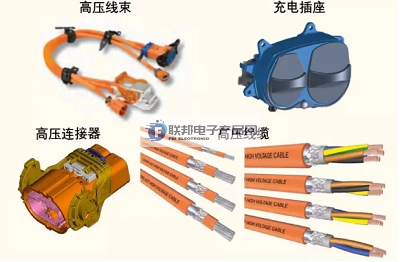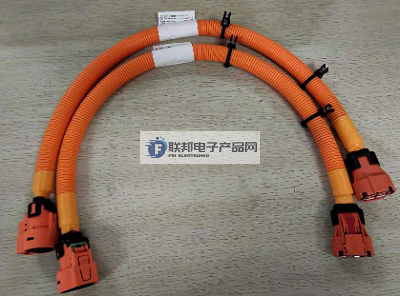Categorization:Product Information
1. The high-voltage wiring harness layout of the whole vehicle involves the design of the high-voltage wiring harness direction, wire diameter, high-voltage connector, charging port selection, electromagnetic shielding design, high-voltage wiring harness fixing buckle selection and so on. High-voltage wiring harness is generally divided into motor high-voltage line, battery high-voltage line and charging high-voltage line centered on high-voltage electrical appliances. Motor high-voltage line generally refers to the high-voltage line connecting the controller and the motor; battery high-voltage line is generally the high-voltage line connecting the controller and the battery; charging high-voltage line is generally the high-voltage line connecting the charger and the battery.2. High-voltage wiring harness arrangement requirements.2.1 High-voltage wiring harness general arrangement requirements The voltage of the high-voltage electrical system in the oil-electric hybrid vehicle is hundreds of volts. Unreasonable arrangement may lead to fire or jeopardize passenger safety. The arrangement of the high-voltage components should meet the requirements of conventional automobile safety and collision regulations, ergonomics and ease of maintenance, as well as develop effective high-voltage protection measures. The following points should be considered when wiring:1) The layout of high-voltage components should allow sufficient buffer space in their transmission paths for the power supply and related components, and increase the distance between high-voltage components and the vehicle body as much as possible to ensure that any non-external high-voltage components and vehicle contours are small enough to remain above 110 mm:2) Crossing and entanglement between high-voltage wiring harnesses should be avoided. Positive and negative high voltage harnesses should be routed along the same path, avoiding or minimizing splitting distances wherever possible;

3) The clearance between adjacent parts should be ≥ 15 mm, dynamic clearance should be ≤ 25 mm; 4) Due to the material and diameter of the high-voltage wire, the front and rear ends of the elbow should have a fixed point, to avoid the actual direction of large deviations from the design direction; 5) Full consideration should be given to the vehicle abrasion, sediment splash and other factors on the high-voltage wiring harness; 6) High-voltage wiring harnesses should be avoided at sharp edges. If unavoidable, should be in the sharp edges (such as over-hole) to add the appropriate protection device. 7) harness turning radius should be ≥ 6D (D for the diameter of the high-voltage wire harness); 8) the ambient temperature should be less than 125 ℃; 9) the gap between the two adjacent fixed points should meet the following requirements: A. high-voltage wire harness cross-sectional area is greater than 16mm2, the gap between the two fixed points ≤ 300mm;; B. high-voltage wire harness cross-sectional area less than 16mm2, the clearance between two fixing points ≤ 200mm;

2, on the federal electronic products network platform related to the introduction and sales of products brief: federal electronic products network - a professional agent / production / sales of all kinds of [connectors | wiring harness | wire and cable products]; if you have a related [connectors | wiring harness | wire and cable products] purchasing / sourcing needs or would like to buy / to understand which connectors | wiring harness | wire and cable products we can provide solutions, please contact our business staff below; If you have related [connectors | harness | wire and cable products] sales / resources and promotion needs, please click on the ¡¡ Business Cooperation ← ¡" and specialists to discuss!